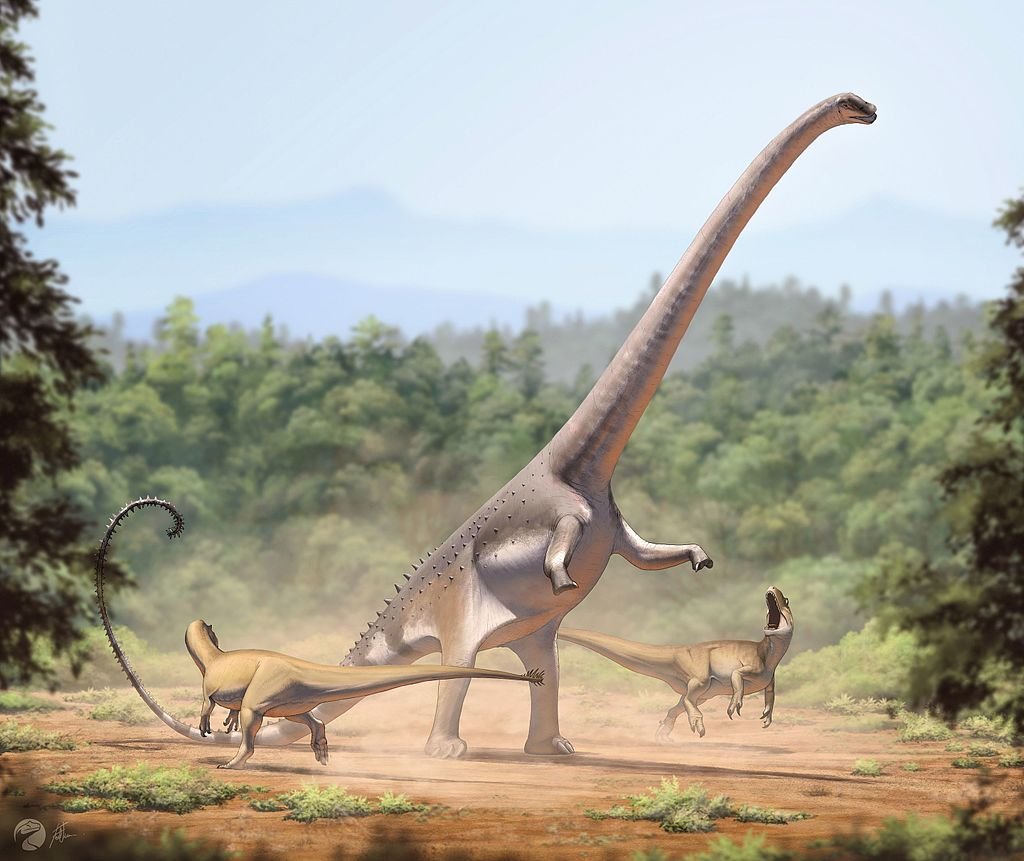A Long-Necked Sauropod from the Late Jurassic Period
Barosaurus Appearance
Barosaurus was a long-necked sauropod dinosaur that lived during the Late Jurassic period, around 155-145 million years ago. It had a long neck and tail, and a massive body supported by four sturdy legs. Barosaurus had a small head with nostrils on the top of its skull, which caused an early assumption in dinosaur research that similar dinosaurs have spent much of its time underwater, using its nostrils as snorkels. Its teeth were small and peg-like, suited for stripping leaves off branches. Barosaurus had a distinctive whip-like tail that it may have used to communicate with other Barosaurus individuals.
Barosaurus Habitat and Where it Lived
Barosaurus lived in what is now North America, during the Late Jurassic period. The environment during this time was characterized by dry and arid conditions, with a mix of forests and plains. The plants that Barosaurus likely encountered included ferns, cycads, and conifers. Other dinosaur species that lived alongside Barosaurus included Stegosaurus, Allosaurus, and Diplodocus.
Barosaurus Behaviour
Barosaurus was an herbivore and likely ate a variety of plant material, such as leaves and ferns. Its long neck allowed it to reach high into trees to access food that other herbivores could not. Barosaurus likely lived in herds, which would have provided additional protection against predators. Its large size and sturdy legs made it a formidable opponent, and it may have used its whip-like tail as a weapon to defend itself against predators.
Who Discovered Barosaurus and Where
Barosaurus was first discovered in 1890 by a team of paleontologists led by Othniel Charles Marsh. The fossils were found in Wyoming, in the same area where other dinosaur species such as Stegosaurus and Allosaurus have been found.
Additional Facts and FAQs
- Barosaurus is one of the largest known sauropod dinosaurs, with some estimates suggesting that it may have reached lengths of up to 26 meters.
- The neck of Barosaurus was longer than any other known dinosaur, with some estimates suggesting that it may have been up to 14 meters long.
- Barosaurus is named after the Greek words “baros” meaning heavy and “sauros” meaning lizard, referring to its massive size.
- Barosaurus is closely related to other long-necked sauropods such as Diplodocus and Apatosaurus.
- The discovery of Barosaurus helped paleontologists better understand the diversity of sauropod dinosaurs during the Late Jurassic period.
- Barosaurus likely had a slow metabolism and may have been able to survive on less food than other herbivores of similar size.
FAQs about Barosaurus
Q: How long was the neck of Barosaurus?
A: The neck of Barosaurus was longer than any other known dinosaur, with some estimates suggesting that it may have been up to 14 meters long.
Q: What is the significance of Barosaurus?
A: Barosaurus is significant because it is one of the largest known sauropod dinosaurs, and its discovery helped paleontologists better understand the diversity of these massive creatures. Its long neck and whip-like tail are unique features that provide valuable insights into the behavior and physiology of sauropods.
Q: What other dinosaur species lived alongside Barosaurus?
A: Other dinosaur species that lived alongside Barosaurus included Stegosaurus, Allosaurus, and Diplodocus.
Q: How did Barosaurus defend itself against predators?
A: Barosaurus likely used its massive size and sturdy legs to defend itself against predators. It may have also used its whip-like tail as a weapon to fend off attackers.
Barosaurus was a massive sauropod dinosaur that lived during the Late Jurassic period in North America. Its long neck and whip-like tail make it a unique and recognizable dinosaur. Barosaurus likely lived in herds and was an herbivore, using its massive size and specialized teeth to eat tough plant material. Its discovery has provided valuable insights into the evolution and behavior of sauropod dinosaurs.


